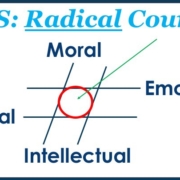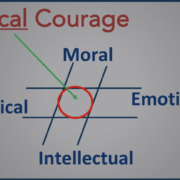Your Culture Doesn’t Eat Anything for Breakfast
The saying, “Culture eats strategy for breakfast,” attributed to Peter Drucker, suggests culture is your top priority.
You know culture is important to cultivate, but where should it rank among your priorities in leading your organization and strengthening its purpose and direction?
I love taking on popular nonsense, and this one needs addressing.
Culture doesn’t eat breakfast, and it certainly doesn’t eat strategy.
Culture and Strategy are peers alongside Leadership, and you need all three working together to succeed.
These factors are interdependent and create a framework that supports growth, resilience, and competitive advantage.
Leadership is the driving force behind an organization’s mission and objectives. It influences the strategic direction, sets the tone for culture, and motivates employees to perform at their best.
Apple’s Steve Jobs’ clear vision was critical in driving innovation and maintaining a competitive edge.
At Wells Fargo, the creation of fake customer accounts by employees was a direct result of toxic leadership behavior that prioritized sales targets over ethical behavior, leading to widespread dissatisfaction and demotivation.
Uber experienced high turnover rates and public scandals, which highlighted a failure to address workplace harassment and discrimination.
Culture embodies the values, norms, and practices that dictate how employees interact and work together. A positive culture fosters engagement, loyalty, and productivity, ensuring the collaborative pursuit of strategic goals.
Google’s emphasis on innovation and employee well-being has enabled it to attract top talent, drive continuous innovation, and maintain high employee satisfaction.
Enron collapsed from a culture of secrecy and poor internal communication, where unethical practices were hidden from employees and stakeholders.
Blockbuster’s resistance to change and innovation prevented it from adapting to the digital streaming revolution, resulting in its downfall.
The strategy involves setting the organization’s purpose and direction and inspiring plans to achieve them so you can navigate the competitive landscape and adapt to market changes.
Amazon’s strategic focus on customer obsession, operational efficiency, and innovation has allowed it to expand rapidly and dominate various markets.
Toys “R” Us failed to address the rise of e-commerce and changing consumer preferences.
Xerox invested heavily in its PARC research center without effectively commercializing the innovations, which led to missed opportunities in the technology market.
Each element—leadership, culture, and strategy—plays a unique and essential role in an organization’s success. The absence of any one of these factors can lead to specific challenges, even if the other two elements are strong. Recognizing these indicators can help organizations identify and address their weaknesses, ensuring a more balanced and effective approach to achieving their goals.
Here’s how you can identify when one of these elements is missing.
Stagnation indicates inadequate leadership. Employees may feel directionless despite having a supportive culture and clear strategies. There is no one to inspire them toward achieving strategic goals, and no one makes bold decisions, resulting in missed opportunities.
Low Morale and High Turnover suggest you need to strengthen your culture. Even with strong leadership and a clear strategy, a toxic or weak culture can lead to employee dissatisfaction and disengagement. People will vote with their feet, and those who remain struggle with execution and performance.
A lack of focus and direction indicates that strategy is missing. Despite having inspiring leaders and a positive culture, the organization may struggle with setting and achieving long-term goals, resulting in drift, confusion, and waste.
Here’s what happens when you have all three working together.
- Alignment: Leadership ensures that the strategy supports the organization’s vision and that the culture advances strategic initiatives.
- Execution: Culture drives how strategy is executed. A positive culture promotes collaboration, innovation, and commitment, which are vital for successful strategy implementation.
- Sustainable Growth: Leadership and culture together ensure that strategic initiatives are sustainable over the long term, adapting to changes and overcoming challenges effectively.
An organization needs strong leadership to set a vision and inspire action, a positive culture to create a supportive and engaging work environment, and a clear strategy to provide direction and prioritize efforts. The absence of any one of these elements weakens the whole structure, making it difficult to achieve and sustain success. The interplay among leadership, culture, and strategy creates a synergistic effect that drives performance and ensures long-term viability.










